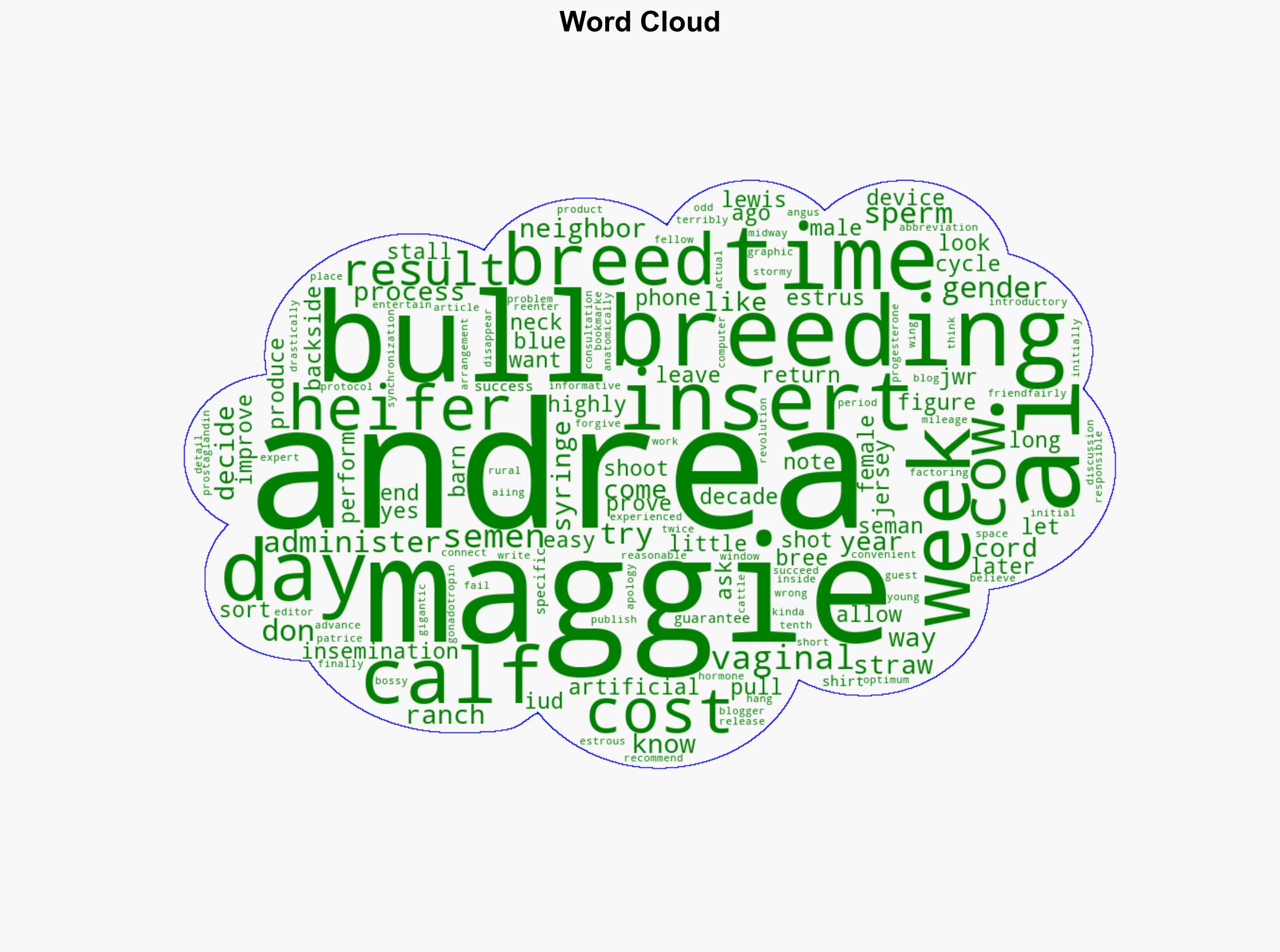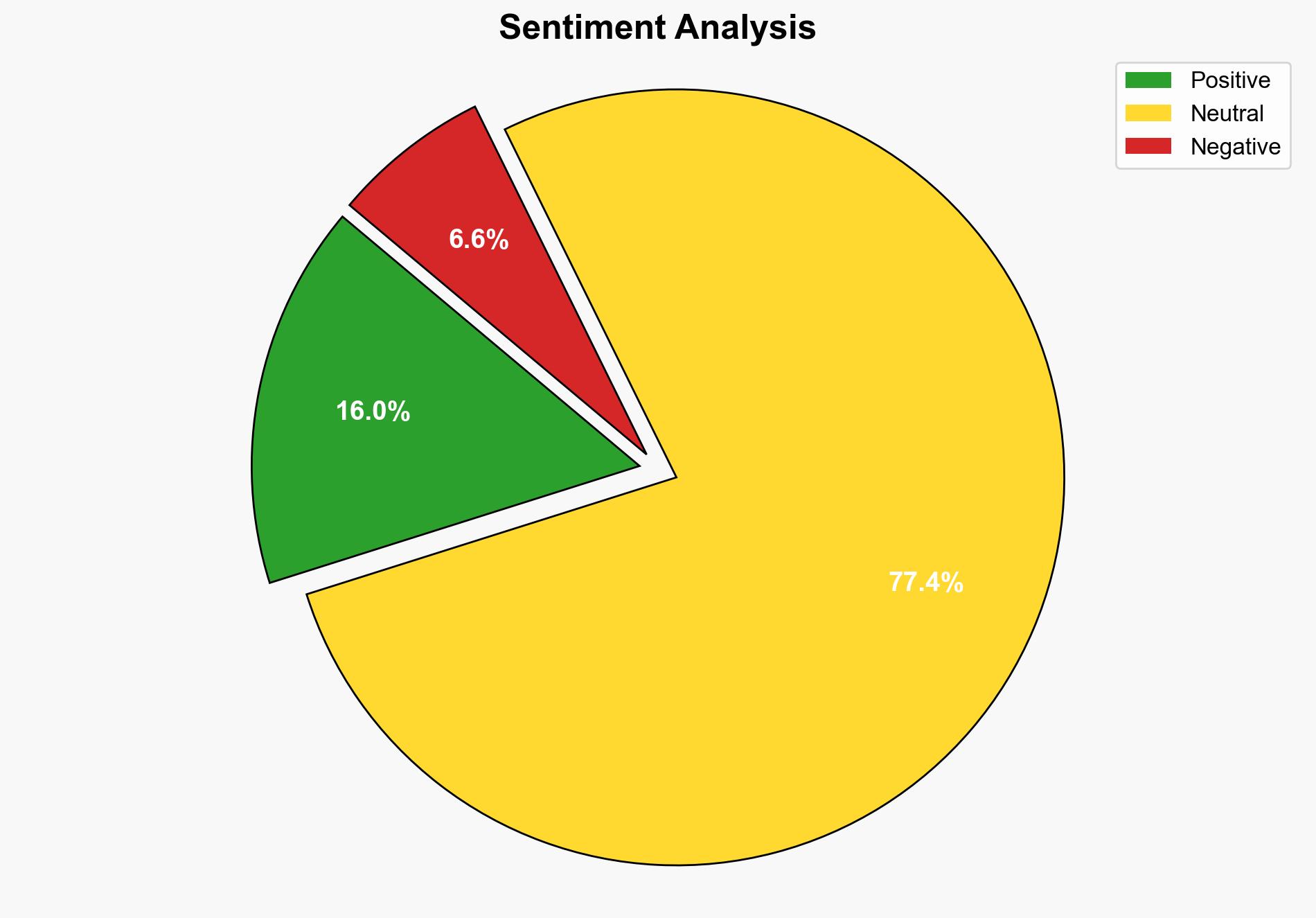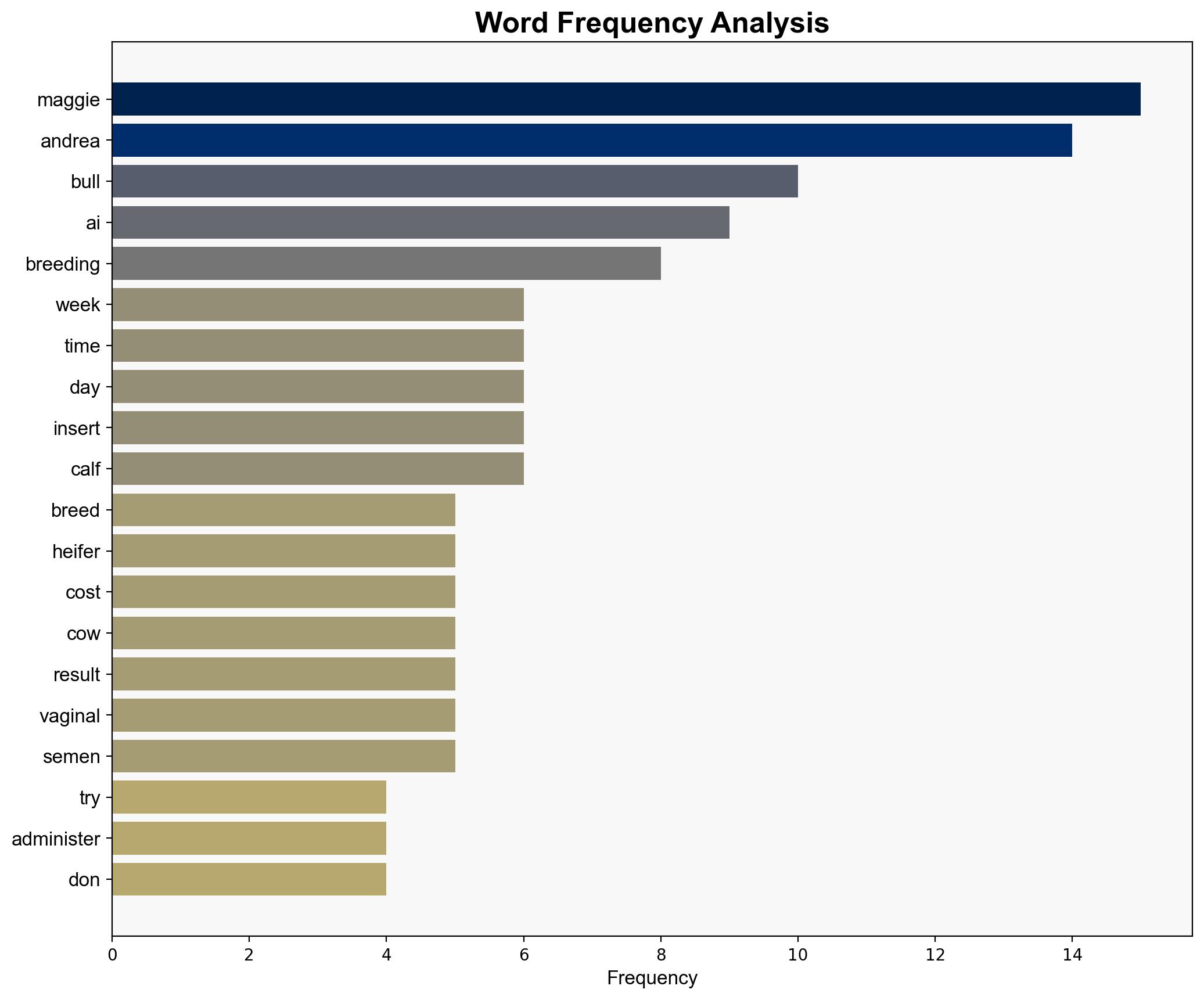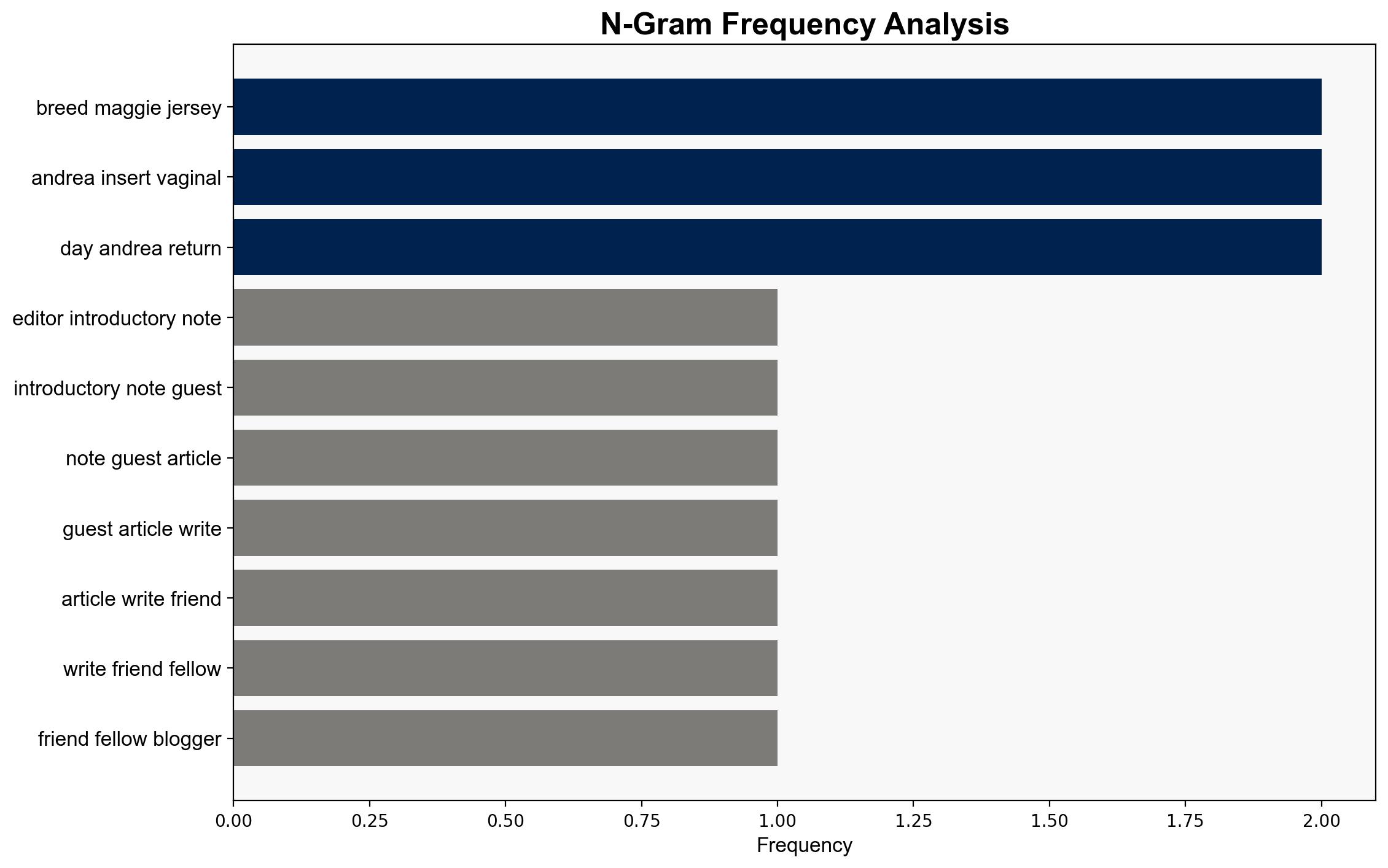The Other AI Breeding Maggie by Patrice Lewis – Survivalblog.com
Published on: 2025-09-28
Intelligence Report: The Other AI Breeding Maggie by Patrice Lewis – Survivalblog.com
1. BLUF (Bottom Line Up Front)
The analysis examines the use of artificial insemination (AI) techniques in cattle breeding, focusing on the potential for gender selection. The most supported hypothesis suggests that AI technology has advanced significantly, allowing for more precise control over breeding outcomes, including gender selection. Confidence in this hypothesis is moderate due to the anecdotal nature of the evidence. Recommended action includes further investigation into the technology’s efficacy and broader implications for livestock management.
2. Competing Hypotheses
1. **Hypothesis 1**: AI technology in cattle breeding has advanced to a point where gender selection is reliably achievable, leading to improved breeding outcomes and economic benefits for farmers.
2. **Hypothesis 2**: Despite advancements, AI technology in cattle breeding, particularly gender selection, remains inconsistent and unreliable, with outcomes still largely dependent on traditional methods and luck.
Using Bayesian Scenario Modeling, Hypothesis 1 is more supported due to the detailed description of the AI process and the claim of improved results over the past decade. However, the lack of empirical data and reliance on anecdotal evidence tempers this support.
3. Key Assumptions and Red Flags
– **Assumptions**:
– AI technology can consistently sort and select sperm for desired gender outcomes.
– The described process is representative of broader industry practices.
– **Red Flags**:
– Lack of empirical data or scientific studies cited to support claims.
– Potential cognitive bias from the author, who may have a vested interest in promoting AI technology.
– Anecdotal evidence may not reflect broader industry trends or success rates.
4. Implications and Strategic Risks
– **Economic**: If AI technology is as effective as claimed, it could revolutionize livestock breeding, leading to economic benefits for farmers through more efficient herd management.
– **Geopolitical**: Advances in agricultural technology could shift competitive advantages among livestock-producing regions.
– **Psychological**: Farmers’ trust in AI technology may increase, reducing reliance on traditional breeding methods.
– **Cascading Threats**: Over-reliance on AI without understanding limitations could lead to economic losses if technology fails to deliver as expected.
5. Recommendations and Outlook
- Conduct empirical research to validate claims of AI effectiveness in gender selection and overall breeding success.
- Monitor developments in AI technology within the agricultural sector for broader implications.
- Scenario Projections:
- Best Case: AI technology proves reliable, leading to widespread adoption and economic gains.
- Worst Case: AI technology fails to deliver consistent results, leading to financial losses and skepticism.
- Most Likely: Gradual improvement and adoption of AI technology with mixed results initially.
6. Key Individuals and Entities
– Patrice Lewis
– Andrea (AI expert involved in the breeding process)
7. Thematic Tags
agricultural technology, livestock management, economic implications, technological advancement





